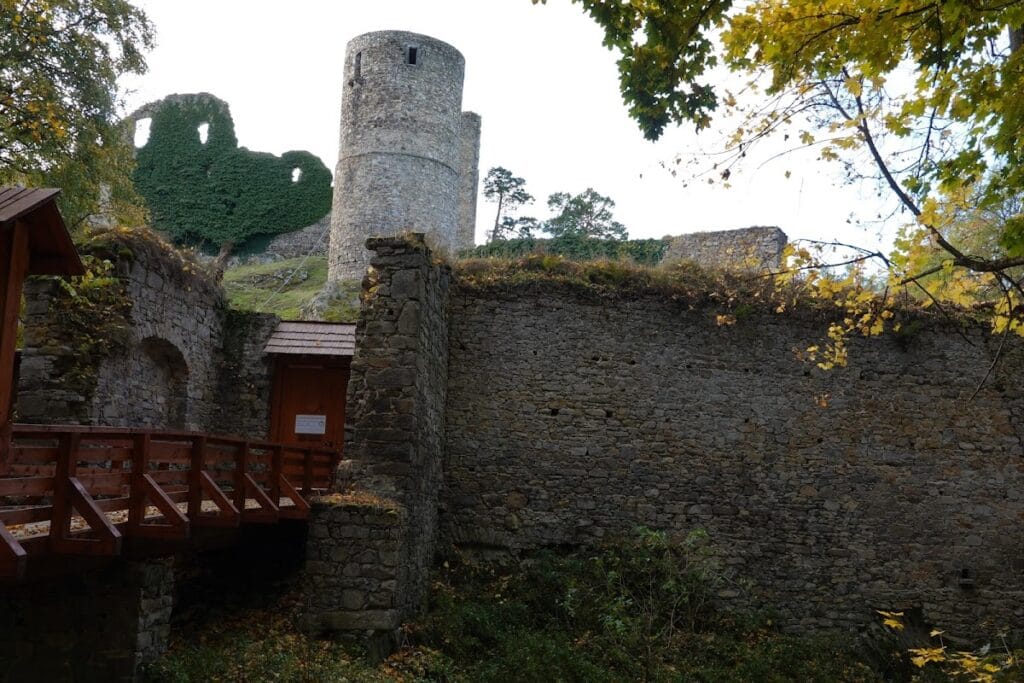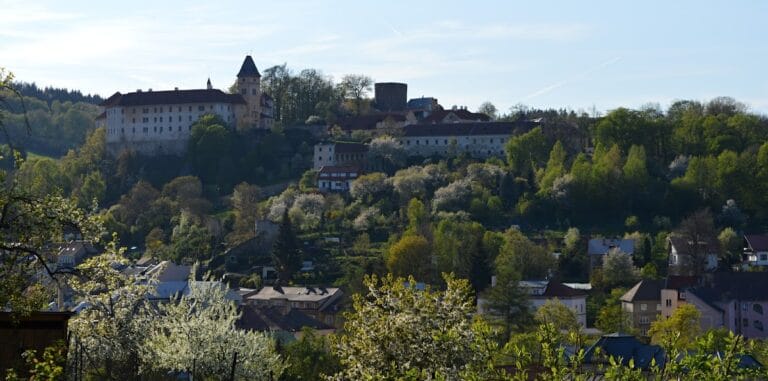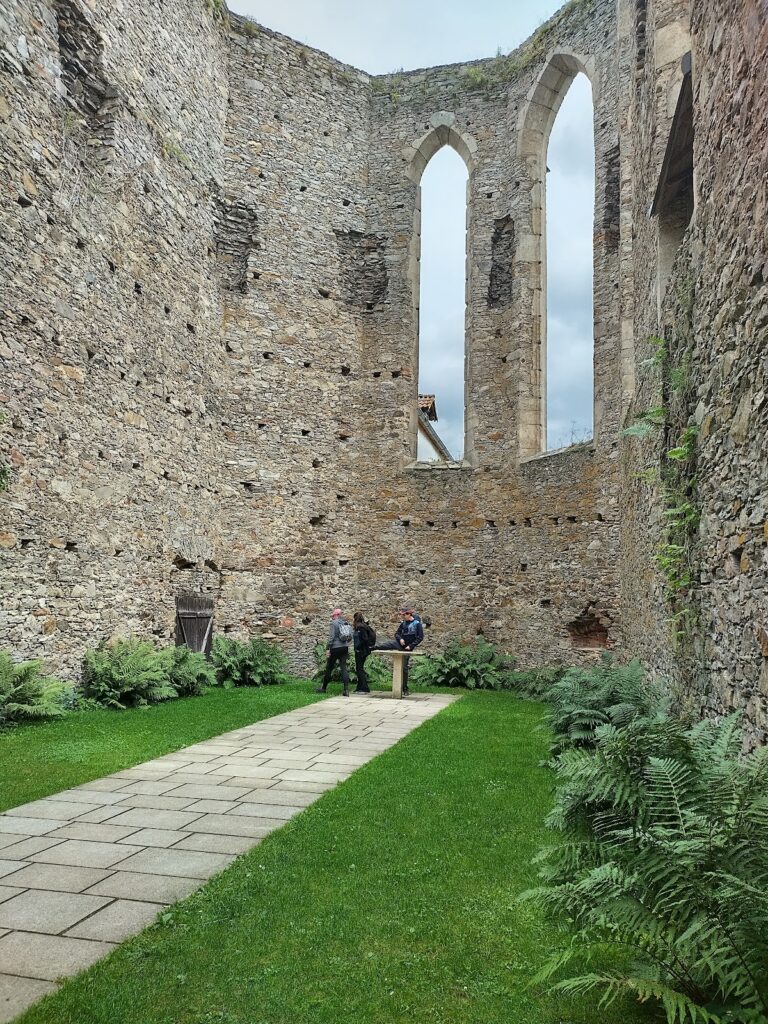Helfenburk Castle: A Medieval Fortress in the Czech Republic
Visitor Information
Google Rating: 4.8
Popularity: Medium
Google Maps: View on Google Maps
Official Website: helfenburk.com
Country: Czechia
Civilization: Medieval European
Remains: Military
History
Helfenburk castle stands near the modern municipality of Bavorov in the Czech Republic. It was established in 1355 by members of the Rožmberk family, a noble lineage prominent in the region, who constructed the fortress as a stone replacement for an older wooden stronghold. This building project was authorized by King Charles IV as a reward for the Rožmberk brothers’ military support during his coronation journey to Rome. Positioned at the edge of their western estates, the castle functioned as a fortified administrative center overseeing nearby lands.
During the late 14th and 15th centuries, Helfenburk became involved in the turbulent politics of Bohemia. It provided refuge to Archbishop Jan II of Jenštěn when he opposed King Václav IV, hosting key negotiations between rival factions at a time of widespread unrest. The castle also played a role in disputes connected to the Hussite Wars and later conflicts during the reign of King George of Poděbrady, signaling its continued strategic importance in regional affairs.
In 1475, ownership shifted when the castle was sold to the Knights Hospitaller. Soon after, the Rožmberks’ control was interrupted once more when Václav Vlček of Čenov acquired Helfenburk. Between 1477 and 1483, Vlček made significant improvements to its defenses, adapting the castle to withstand advances in military technology. The Rožmberk family regained possession in the early 16th century, but by that time Helfenburk’s role as a military fortress was fading.
By the late 1500s, the castle transitioned into a residence serving administrative purposes rather than defense. It was abandoned in the 1590s and sold to the nearby town of Prachatice in 1593. Following the decisive Battle of White Mountain in 1622, the castle was confiscated by the authorities and passed through the hands of the Eggenberg and later the Schwarzenberg families. In the 20th century, the site was nationalized in 1922, marking another shift in its stewardship.
Efforts to stabilize the castle ruins began in the 1930s, aimed at preserving the remaining structures. In 1977, one of the defensive towers on the south side was adapted for use as a lookout. Since the 1990s, the town of Bavorov has maintained the ruins, which are recognized as a cultural monument reflecting centuries of regional history.
Remains
Set atop Malošín hill at an elevation between 668 and 683 meters, Helfenburk occupies a rocky spur separated from the main ridge by a relatively flat saddle. The castle’s roughly circular plan stretches primarily from west to east, with its widest side facing north toward the main ridge, where the strongest fortifications were concentrated. Its layout includes three principal sections: the central inhabited core, an inner forecourt, and a larger outer forecourt below on the northern slope.
The central core, or citadel, contains two nearly identical stone palaces facing each other across a square courtyard. These two-story buildings feature vaulted stone basements and large rectangular windows, originally connected by a wooden gallery above the courtyard walls. Later modifications replaced the wooden gallery with a stone arcade supported by octagonal columns at the first-floor level. The courtyard walls rise approximately two stories high, enclosing this residential and administrative core.
Surrounding the core is a double curtain wall reinforced with semicircular towers at the corners. A deep ditch encircles about three-quarters of the castle’s perimeter, supplemented by an earthen rampart. Along the vulnerable northern approach, two forecourts lie in succession, separated by a curtain wall. A tall cylindrical bergfried—the main defensive tower—rises to about 18 meters with a diameter of roughly 10 meters, largely preserved in situ. This tower served as a final defensive refuge and lookout point.
The outer forecourt gates include a northern entrance featuring a drawbridge over a defensive ditch, protected initially by a wooden blockhouse designed to impede attackers. Access to the inner forecourt was controlled by a secondary gate equipped with a portcullis—a heavy, vertically sliding grille—while a third gate with another drawbridge led into the central citadel. These layered defenses created a series of obstacles for any assailant.
In the late 15th century, following Václav Vlček’s ownership, Helfenburk’s fortifications were modernized for evolving warfare. Additional semicircular bastions equipped with arrow slits and covered walkways for defenders’ protection were added atop walls and towers, enabling both traditional archery and mounting artillery. Such adaptations reflect responses to the increasing use of firearms and cannons.
Water storage was addressed by a well or cistern situated beneath a trapezoidal tower at the northwest corner of the castle. This feature ensured a reliable supply during sieges. South of the core stood a defensive tower that centuries later was converted in 1977 into a lookout point, preserving its structural integrity for observation purposes.
Constructed predominantly from locally quarried stone, the castle integrated wooden elements such as galleries and bridges in its original form. Some brickwork dating to the 15th century also survives, particularly in the reinforced fortifications. The southern semicircular courtyard contained economic buildings supporting the castle’s inhabitants. Over time, many decorative stone elements were removed by local residents for reuse elsewhere, yet substantial remains of walls, towers, and architectural details like corbels—stone supports for the former wooden gallery—still stand today, offering a tangible glimpse into Helfenburk’s medieval past.










